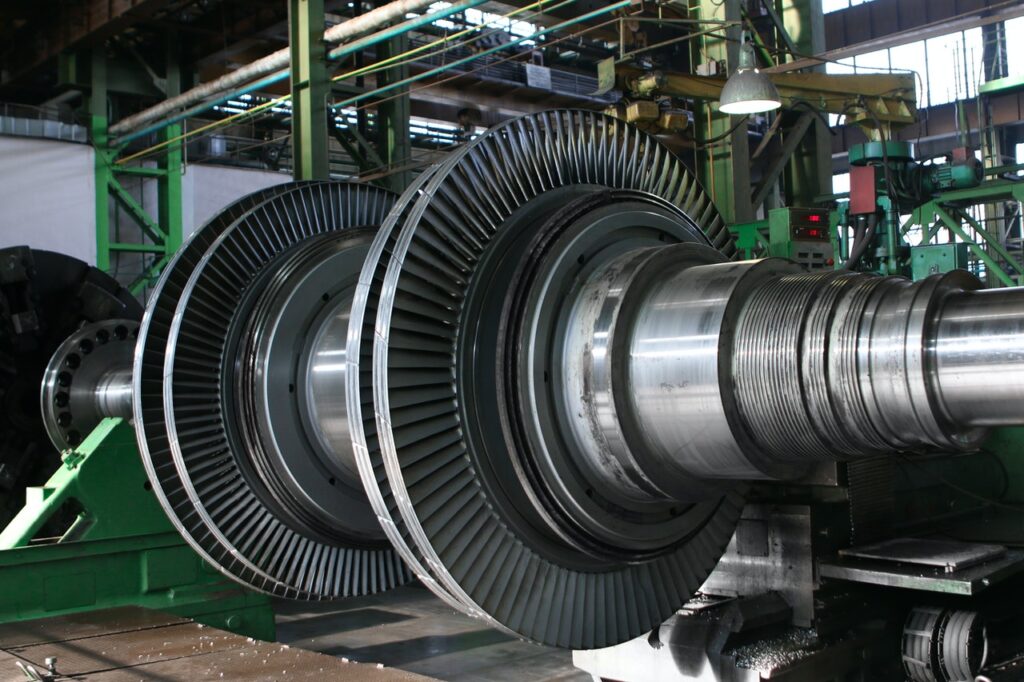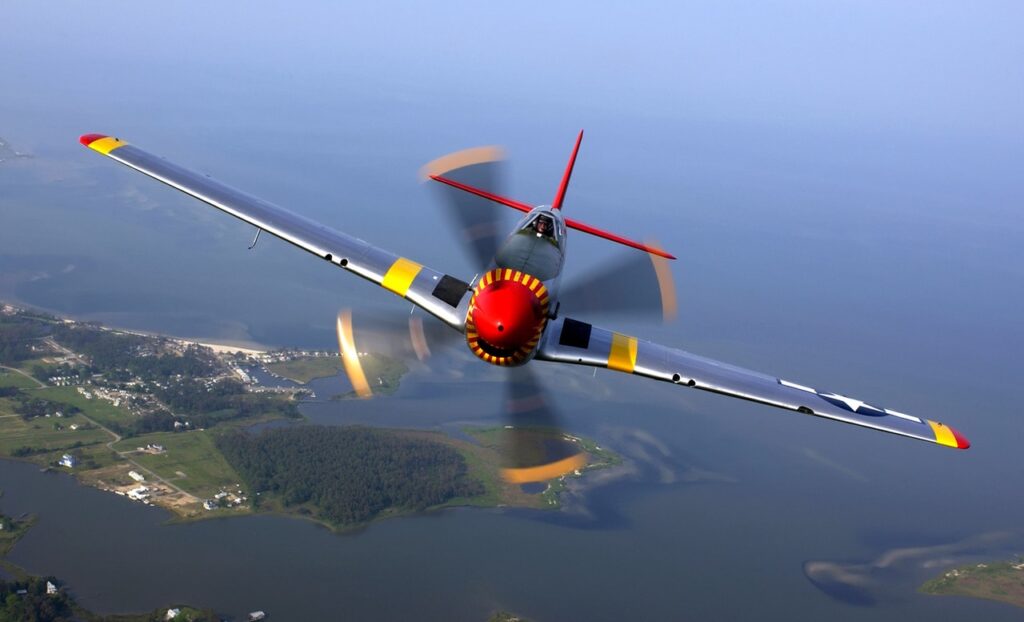A mechanical engineer in the aerospace field is not uncommon. Once an engineering degree such as mechanical engineering is obtained, a route into multiple areas of engineering is possible. Aerospace engineering is definitely a viable career path for a mechanical engineer.
Mechanical Engineer
Mechanical engineering combines mathematics, physics and engineering principles with materials science to design, analyze, create, and maintenance of mechanical systems. It is one of the eldest and most varied of the engineering disciplines. It is the branch of engineering that is concerned with the creation and operation of machinery. The mechanical engineering profession demands a good understanding of the main areas including structural analysis, thermodynamics, mechanics, dynamics, materials science, and electricity.
Mechanical engineers are typically involved with the generation, distribution, and use of energy; the control and automation of manufacturing systems; the processing of materials; the design and development of machines; and the solutions to environmental problems. Mechanical engineers are distinguished by their personal versatility and creativity and also their vast knowledge. They are very reliable and valuable multidisciplinary team members.

According to reports from the BLS, it is stated that a bachelor’s degree in mechanical engineering is considered a necessity for entry-level positions in the field. Students may also choose to complete a two-year pre-engineering degree, they would then be able to go on and obtain a job as a mechanical drafter. This would allow them to move to a four-year school to complete the remaining requirements for their degree. Most employers favor employees that have obtained a bachelor’s degree from a program accredited by the (ABET)-Accreditation Board for Engineering and Technology .
Aerospace Engineer
Aerospace engineering is the branch of engineering concerned with the design, development, production and testing of aircraft, spacecraft, and related equipment and systems. The field has traditionally focused on problems related to atmospheric and space flight, with two main and overlapping disciplines: astronautical engineering and aeronautical engineering .
Aeronautical engineering is concerned with design, creation and maintaining of travel machines, including spacecraft, satellites, helicopters, missiles and airplanes and within the Earth’s atmosphere.
Astronautical engineering is a particular discipline of engineering that is concerned with the development aircraft and spacecraft that run outside of the Earth’s atmosphere.
“Aeronautical engineering” was the first definition for the field. Flight technology has advanced over the years, meaning it now includes vehicles that can operate in space, therefore the wider term “aerospace engineering” has become common use. Aerospace engineering, particularly the astronautics side, is also called “rocket science”.
Aircraft, missiles, spacecraft, and other airborne objects are all items designed by aerospace engineers. Actually, making prototypes of these designs and sketches and running tests on them is a huge part of their purpose as an engineer. They also can analyze and evaluate the designs of fellow engineers to make sure that the design meets specific environmental, ethical and safety, and standards.

Aerospace engineers need a minimum of a bachelor’s degree to work in the the aerospace field. University also have 5-year courses that allow students to complete both a bachelor’s and master’s degree simultaneously. ABET accredits all aerospace engineering courses.
Mechanical & Aerospace Engineer Education
Mechanical Engineer
Step one to perusing a career as a mechanical engineer is obtaining your undergraduate degree from a program accredited by the Accreditation Board for Engineering and Technology. A bachelor of science in mechanical engineering is the usual course selected for entering this field, however individuals can also major in mechanical engineering technology. When studying an undergraduate mechanical engineering program it can be expected that it will consist of a substantial amount of coursework in design, engineering, life sciences, math and physical sciences.
Learning both engineering principles and theory will be a huge part of the course, however students should know that they will also be spending their tie actually applying that knowledge to the real world. Engineering programs are strict and nearly all of the time require the students to undergo participatory work experience through co-op and internships.
For a lot of mechanical engineers, to have preparation to pursue a career in mechanical engineering a bachelor’s degree alone would be sufficient. This undergraduate education would have thought them the necessary theory and also how to apply it in their career. This being said, there are certain responsibilities and roles in the discipline of mechanical engineering that require a master’s degree. For high-level academic development and research and also university settings jobs, employers are more likely to favor candidates that possess a graduate degree. Some eager mechanical engineers can choose to obtain a degree in a adjoining subject, such as business administration, this would then allow them to advance into management roles.
Some engineers choose to enter the working world and gain work experience before going back to study for their master’s-level studies, while other choose to progress straight to graduate school. If graduate school is part of your criteria, then you should know that there are also options that allow you to obtain both your bachelors and masters degrees simultaneously, these degrees are usually 5 to 6 years in duration.

Aerospace Engineer
A bachelors degree is the first step to becoming an aerospace engineer, usually in aerospace or aeronautical engineering, that has been approved by ABET. 4-5 years are the usual duration of these programs. Enrolling in core modules such as chemistry, mathematics, and physics are typical of how students start their education to become an aerospace engineer. Most courses also require students to undertake introductory labs, these include testing engineering principles that are applied to flight and propulsion.
Once these core requirements are completed, they then can go on to complete more intricate modules that educate students on topics, these range from electrical systems in cockpits to the aerodynamics of airplane bodies. When the fundamentals are covered of stability and flight control, students may then explore into the more challenging topics of electrical components and aircraft sensors, and additionally flaps and wing structures. There are also courses that may provide education and training in combustion engine design and power generation for aircrafts.
The senior year of a bachelor’s degree in aeronautical or aerospace engineering, students generally undertake classes in design and lab courses. Research is required for these regarding problems varying from construction materials to wing design. To complete these projects, students may hold responsibility for changing areas where designs may not work properly as well as simulating flight. This is where students would then apply their knowledge of the subject and then may change models, examine designs, and also arrange class presentations.
Security clearance is usually needed for aerospace engineers who work on jobs that are tied to national defense.
Modules (classes) within an aerospace engineering degree will include: structural mechanics, flight testing and analysis, gas dynamics solid mechanics, numerical and experimental methods, thermodynamics, fluid mathematics and stress and dynamics, air-frame design, design optimization, flight dynamics and control and computer-aided engineering .
Mechanical & Aerospace Engineer Job Description
Mechanical Engineer
Mechanical engineers create power-producing machines, for example – steam and gas turbines, internal combustion engines and electric generators, , they also design power-using machines, such as AC systems and refrigeration.
They create other machines that are also used inside buildings, for example: escalators and elevators . Mechanical engineers also create material-handling systems, such as automated transfer stations and conveyor systems.
There are some crucial skills needed in mechanical engineering, these consist of an thorough grasp of materials, mathematics and physics. These skills let the engineers calculate the failure conditions based on the conditions under which it will operate, the properties of its material and dimensions of a part. A mechanical engineer can then devise the materials and dimensions required of the part so it can take a given force.
Mechanical engineers are known for spending a significant time in front of computers, as they build simulations and models of their creations using CAD (Computer Aided Design). This also involves undertaking an in depth analysis of all results produced by these investigations, if an issue arises within their first model, mechanical engineers then apply their expertise to create a solution to the problem.
Job responsibilities of a mechanical engineer include:
- Plan, conceptualize, and create mechanical designs for new products
- Perform engineering calculations to support design work
- Create and review technical drawings, plans, and specifications using computer software
- Ensure project timelines are met and projects stay within budget
- Complete projects by training and guiding technicians
- Generate working prototypes for better testing and customer demonstration
- Collaborate with multidisciplinary engineering teams, and work with contractors and vendors
Aerospace Engineer
Aerospace engineers investigate, devise, develop, test and maintain the performance of:
- civil and military aircraft
- satellites
- space vehicles
- missiles
- weapons systems
Work is also carried out on the different components that make aircraft, spacecrafts and systems. In some companies they are known as aeronautical engineers. They are focused on improving speed and weight, flight safety, fuel economy, as well as minimizing system costs and utilizing emerging technologies to satisfy customer needs. This position progressively speaks about the environmental effect of air travel. There are approximately 72,500 aerospace engineers working in the United States.
Aerospace engineers can specialize in a particular areas such as:
- aerodynamics
- avionics
- materials and structures
- propulsion
- systems integration

Some job responsibilities of an aerospace engineer include:
- Set up and run stress, operational, environmental or experimental tests on prototypes or models of aerospace or aircraft systems or equipment
- Troubleshoot performance problems by analyzing feedback from clients or field engineers and also by investigating damaged or malfunctioning products
- Devise conceptual design of aerospace or aeronautical systems or products to align with client requirements or meet environmental standards and regulations
- Coordinate and/or plan investigation and resolution of customers’ documentation of technical difficulties with aerospace or aircraft vehicles
- Run and man activities of technical and engineering personnel involved in creating, fabricating, changing, or analyzing of aerospace or aircraft devices.
- Write technical documents, such as bulletins or handbooks, to be used by management, engineering staff or clients
Mechanical Engineer in the Aerospace Field
Both mechanical and aerospace engineers share their interest in the manufacture, design, and testing of devices and machines. Their job is to create equipment that runs safely, effectively and efficiently, they also test and investigate the equipment to make sure that it meets the necessary criteria and measures. There is an overlap in the engineering principles in the both disciplines, however aerospace engineers challenge flight mechanics and aerodynamics in a way that mechanical engineers usually do not. If one aspires to become a mechanical engineer within the aerospace field then they will have to become used to thinking like this.
Aerospace engineers usually go on to work with the government or military opposed to a regular mechanical engineer, and they may take part with the designing and creating of satellites and weapons. It is essential for a mechanical engineer in the aerospace field to possess strong mechanical and mathematical skills. They also will need computer skills to operate design software and run simulations. It’s common for these engineers to perform most of their duties in an office. They will also work full time and project leaders may need to work overtime hours.
As mentioned above, a mechanical engineer in the aerospace field will be involved with the design, manufacture and testing of aircraft and the products that the aerospace industry uses. They will design spacecraft structures. These engineers are involved in things like making sure that a satellite is able to withstand the force of a rocket launch, and its solar cells will work properly in orbit, and that its rocket engine is efficient with fuel use to reach orbit successfully. They could specialize in projects like mission systems, airframe structural analysis and design, or flight tests.

The average annual wage for a mechanical engineer in the aerospace field was $116,500 in May 2019.
If you have anything to add, please feel free to leave a comment down below, and sign up to our newsletter for more of the same content!


